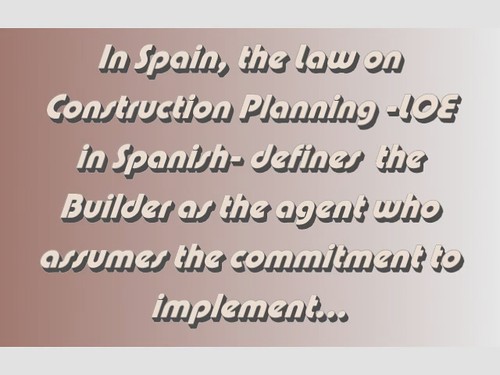Professional Fees of the Spanish Architects
The cost of architectural services in Spain
Before April 16, 1997, fees of Architects in Spain were governed by the fee scales established by the Colleges of Architects. However, after the entry of the “Ley de Medidas Liberalizadoras en Materia de Suelo y de Colegios Profesionales” (Law of Liberalization Measures on Land and Professional Associations), the rates established by professional associations became only for guidance. Since then, Spanish Architects have complete freedom when it's to determine the amount of professional fees that correspond to their services.
Items Comprising the Fees
Like any other professional, Spanish Architects are entitled to receive the payment for the professional fees earned by providing services and to recover the costs which were needed to complete their work. The amount of the Architect's professional fees must include at least the following items:
- a compensation for the time spent on the professional assignment
- a compensation for the expenses he had to incur: travel, materials, obtaining documents, etc.
- an adequate remuneration for the duties performed.
In addition, the calculation should take into account the degree of complexity of the assignment and the possible need for specialized knowledge.
The Reporting Obligation
Spanish Architects have a legal obligation to inform their clients about the amount of their professional fees. The current “Ley sobre el libre acceso a las actividades de servicios y su ejercicio” (Law on Free Access to Services Activities and its Exercise) provides two methods for this:
- the Architect previously set a price for a particular type of service, in which case he must provide, in an easily accessible way for clients, the full price, including taxes
- the Architect doesn't set the price beforehand, in which case, at the client's request, he shall provide the service price, or a method to calculate it, or a sufficiently detailed fee proposal.
Daniel Trujillano, Spanish Architect
http://www.arquitectotrujillano.com/home.html
Professional Architectural Services for Building Projects in Spain

